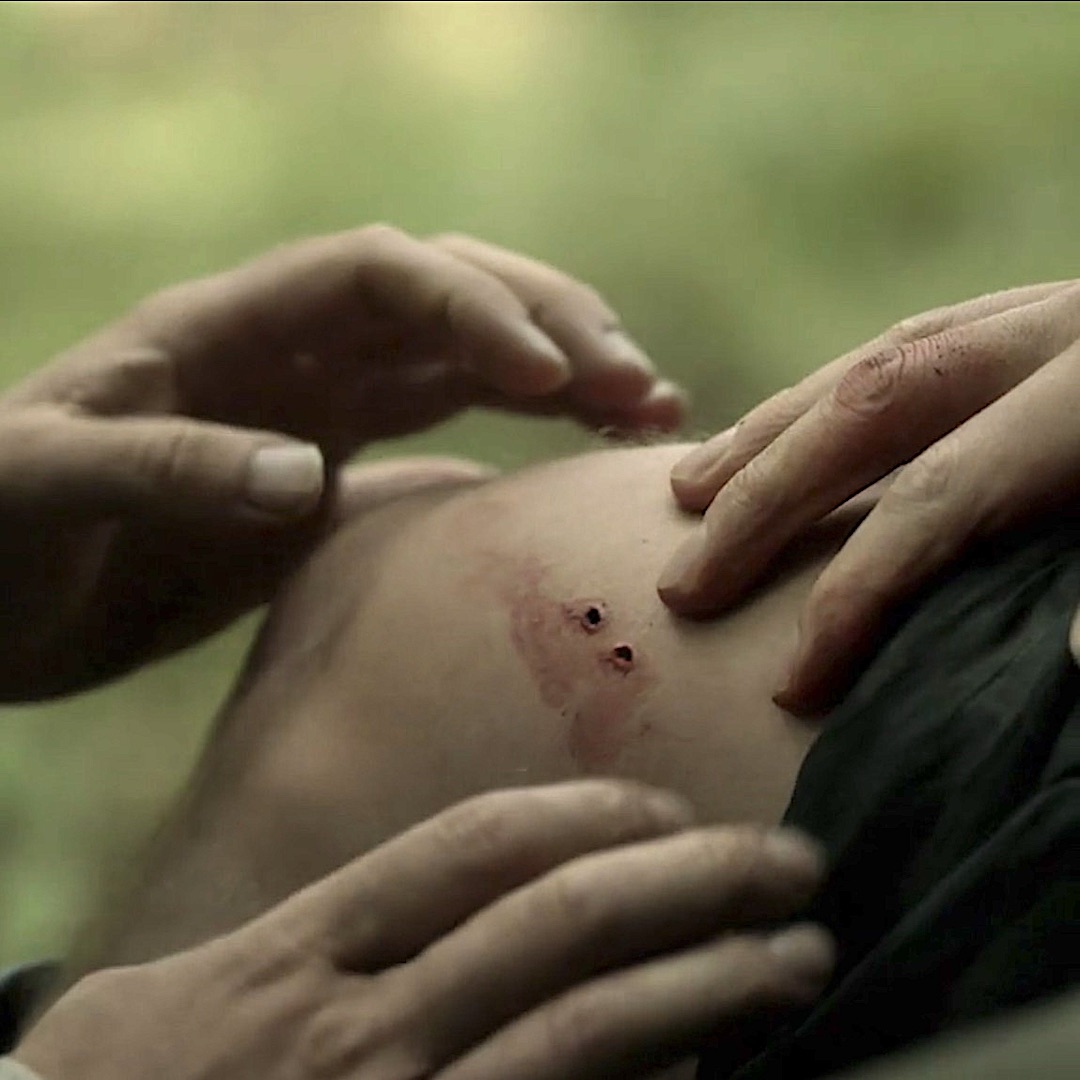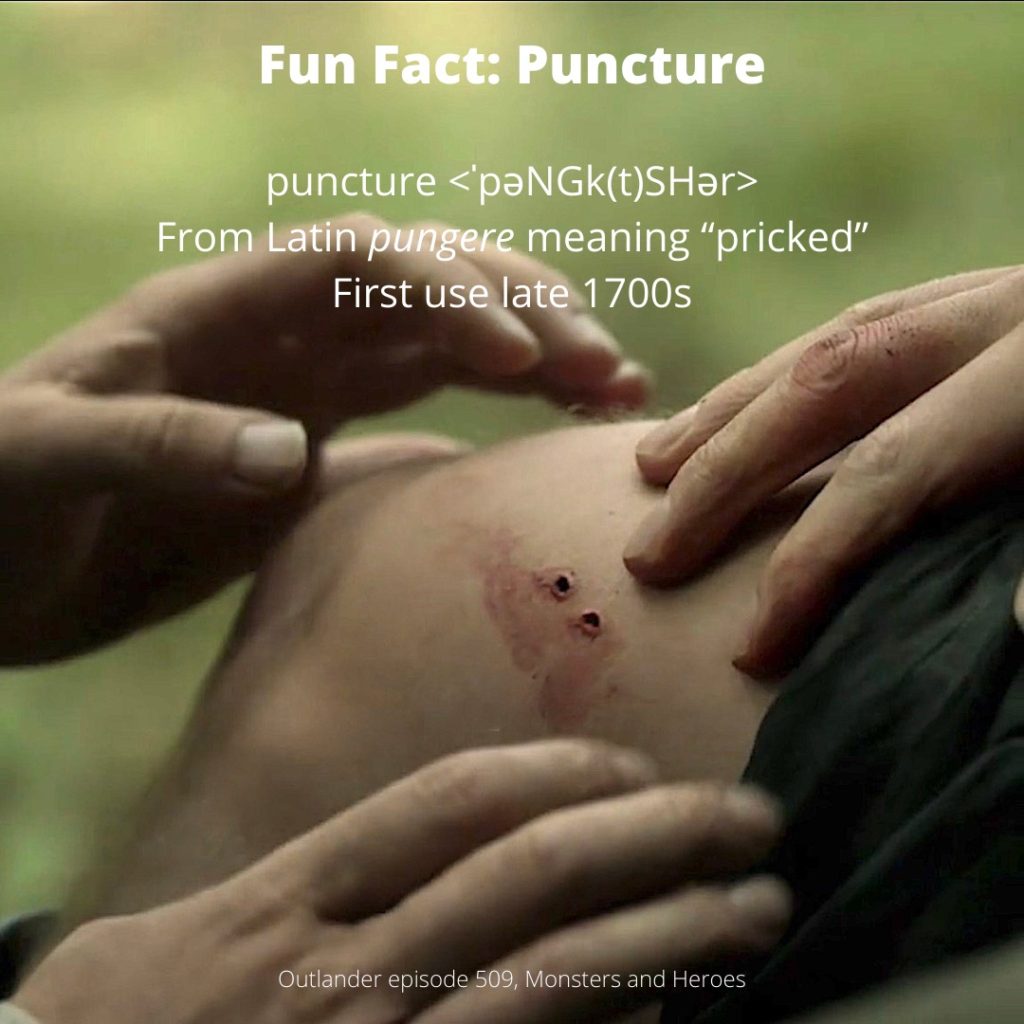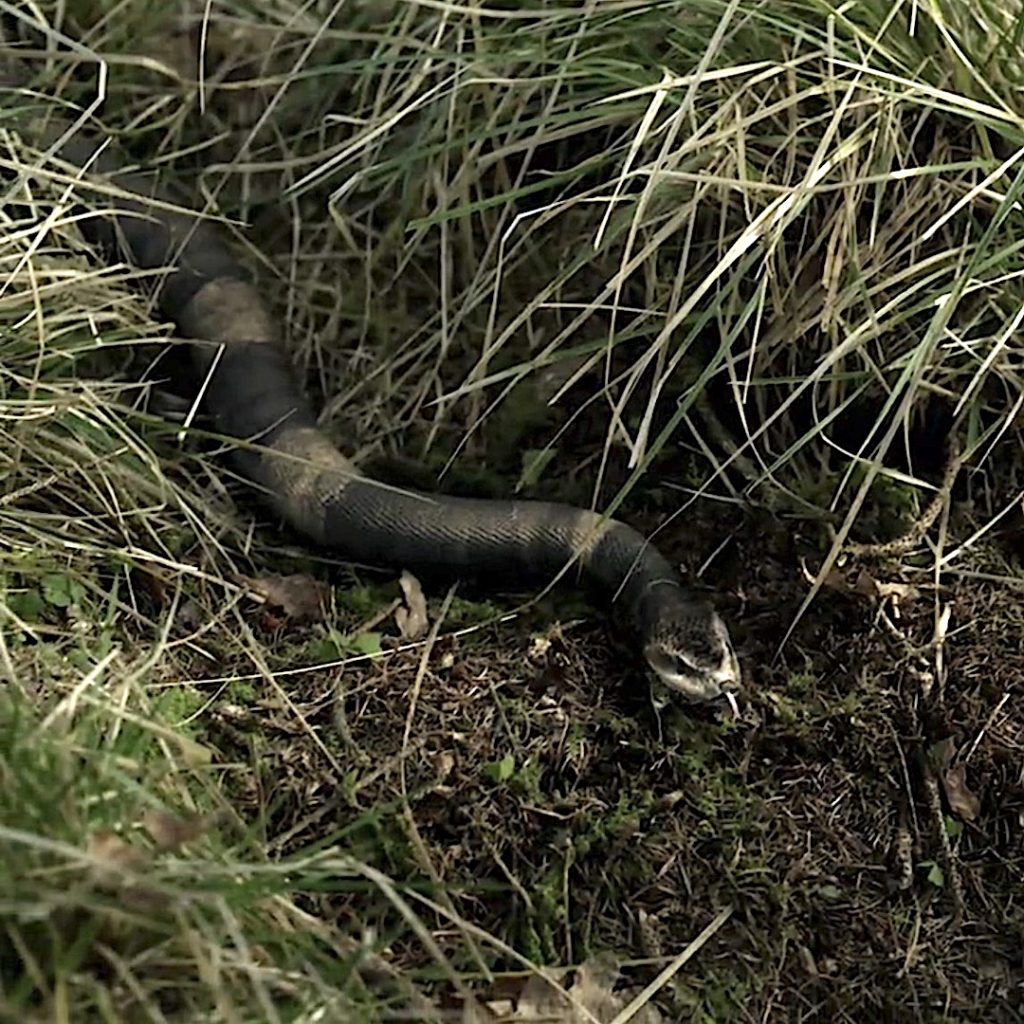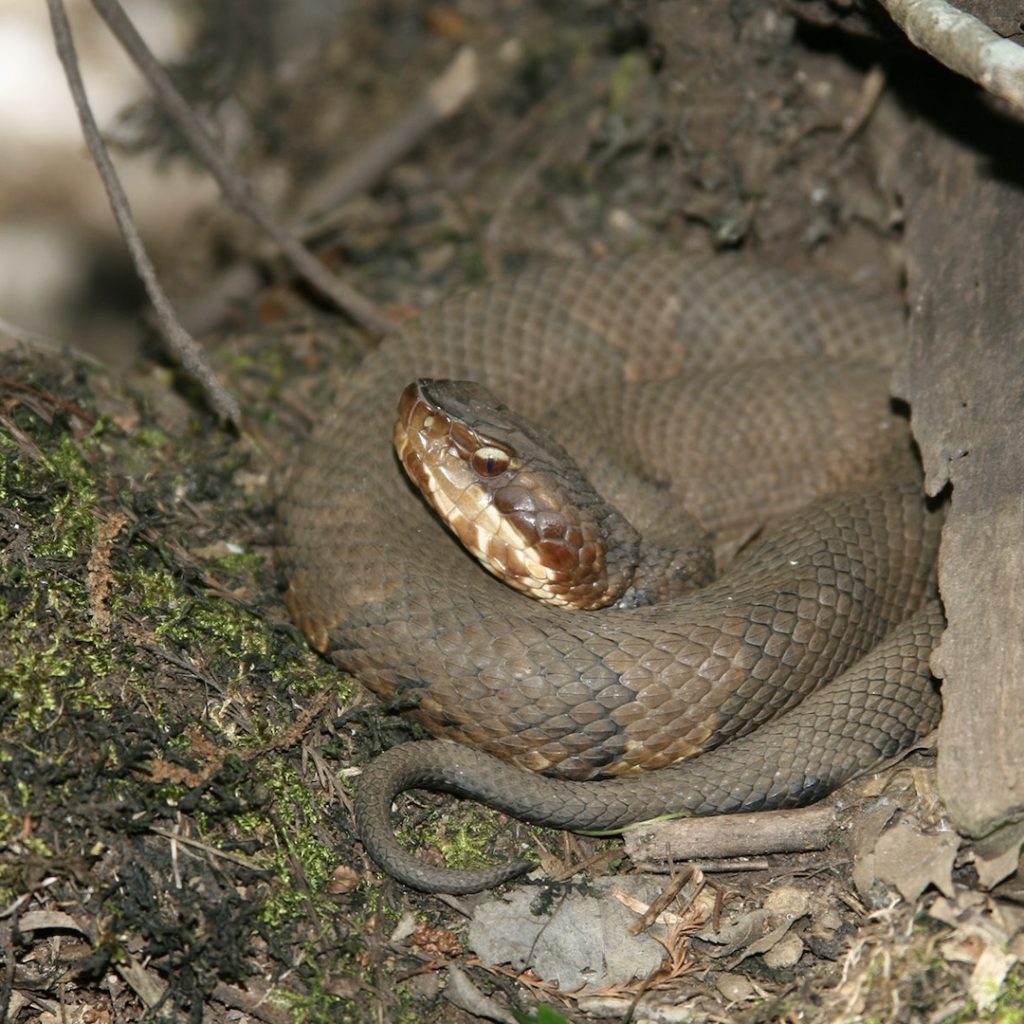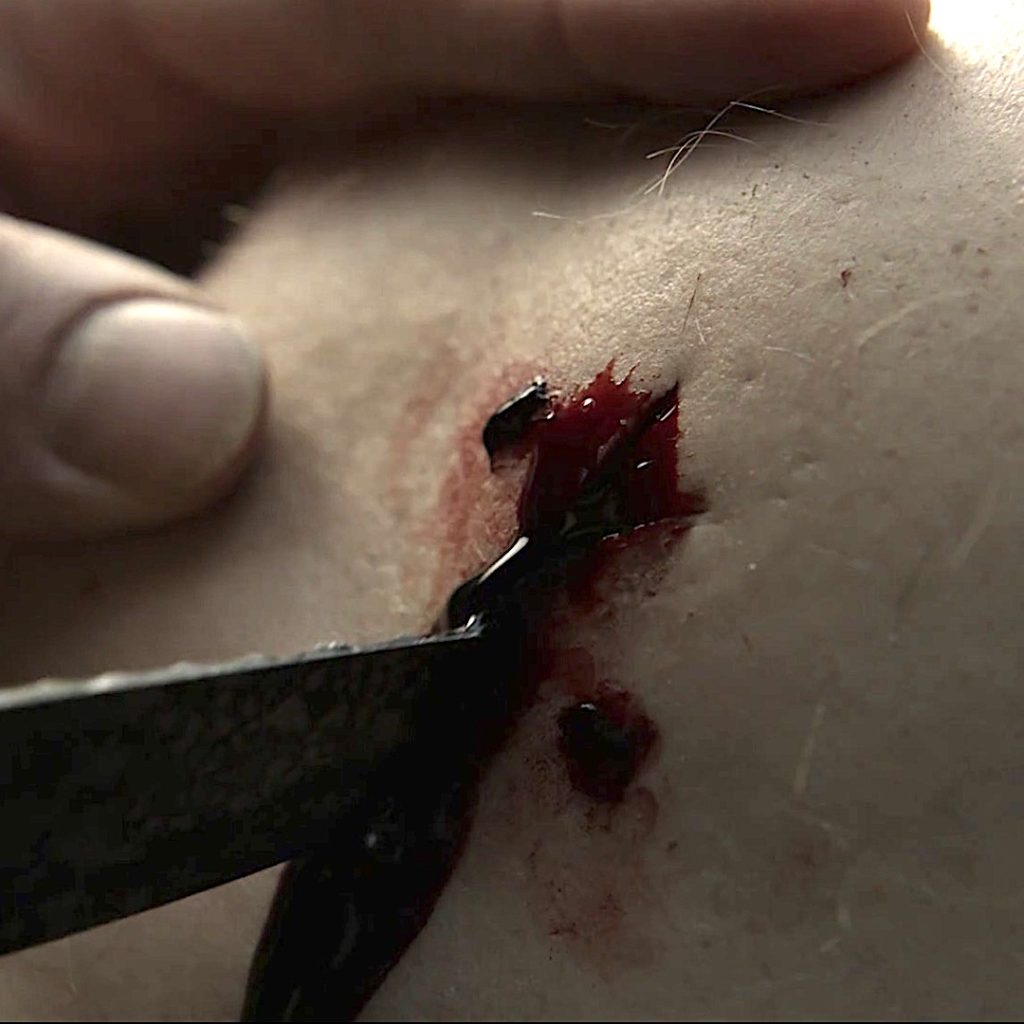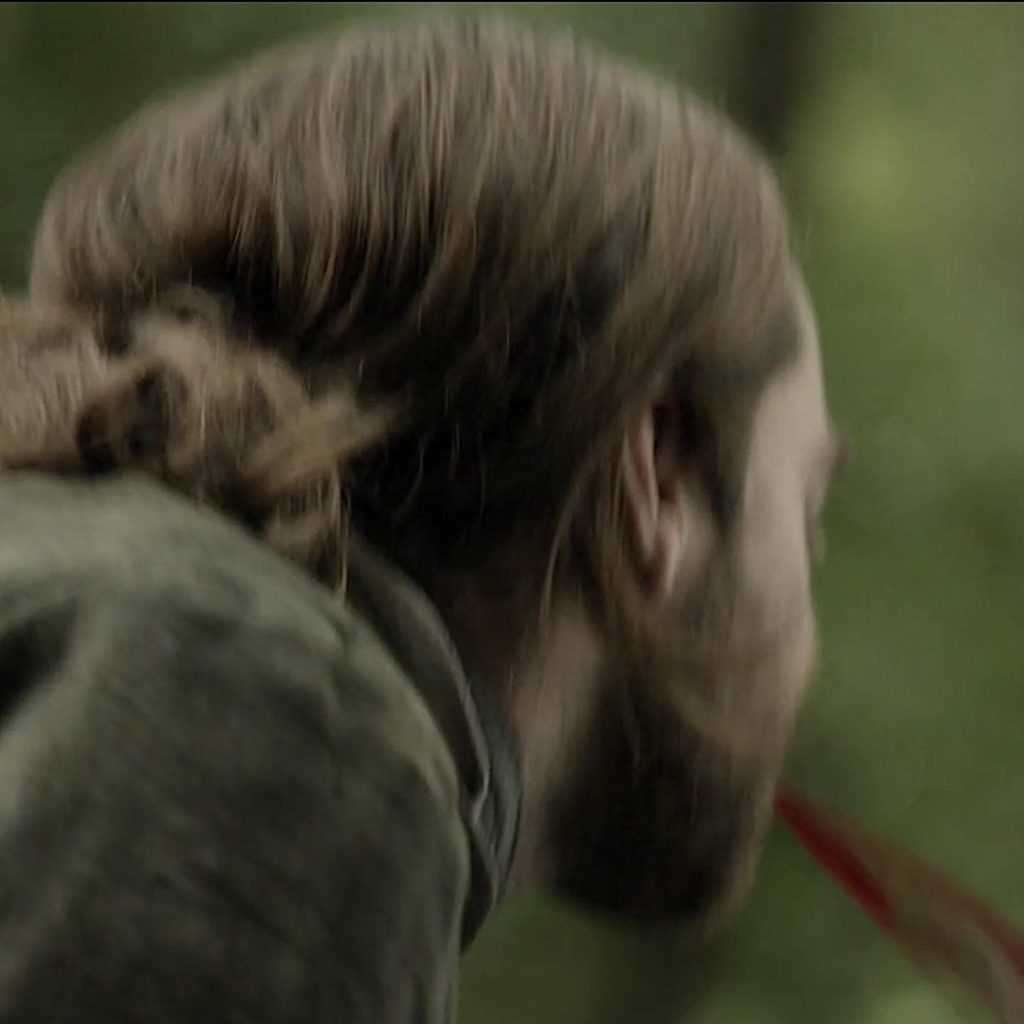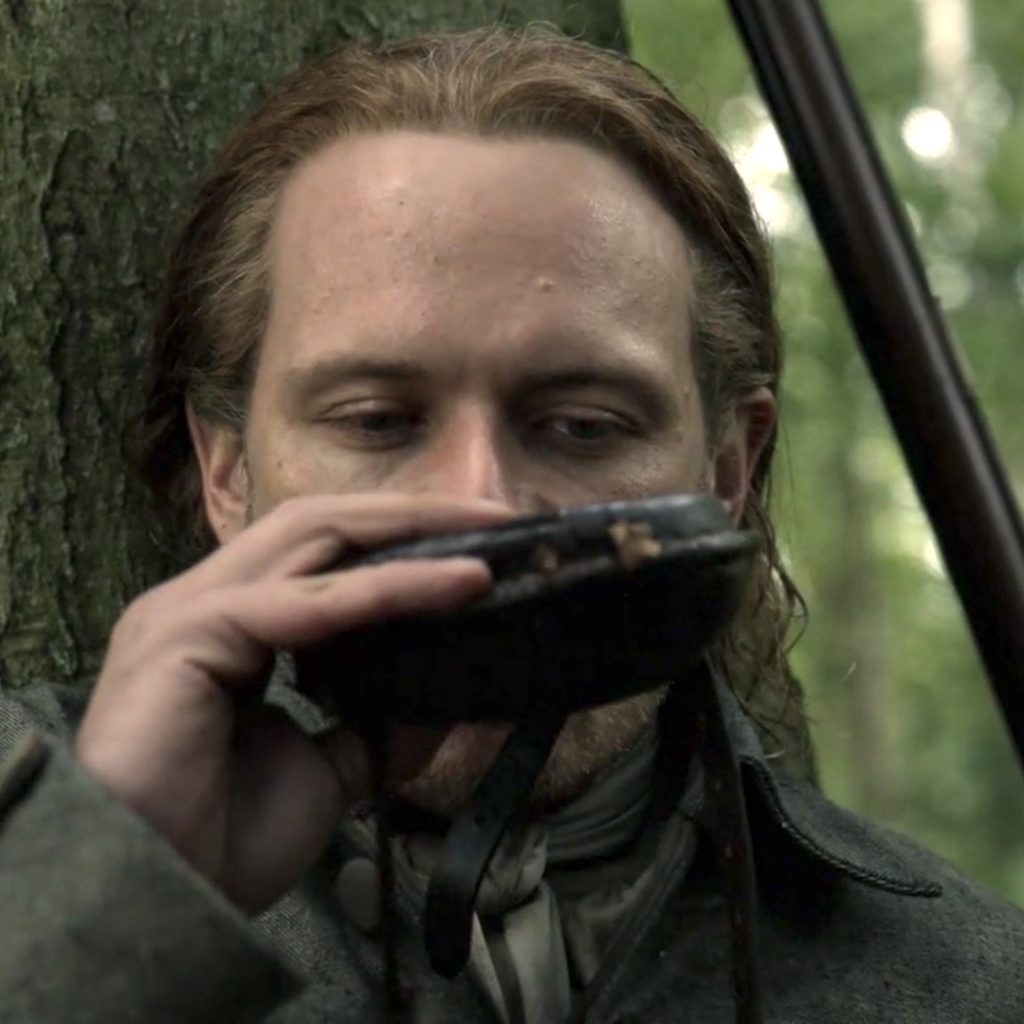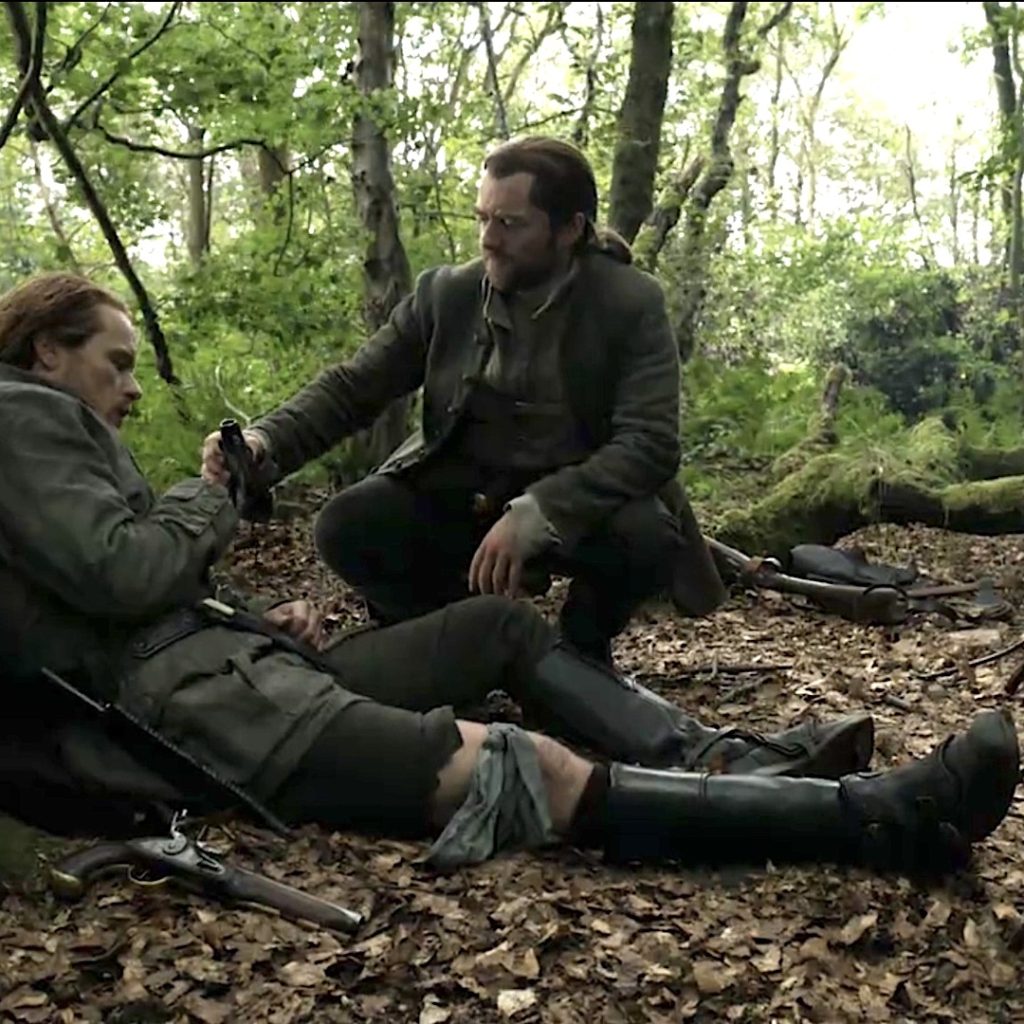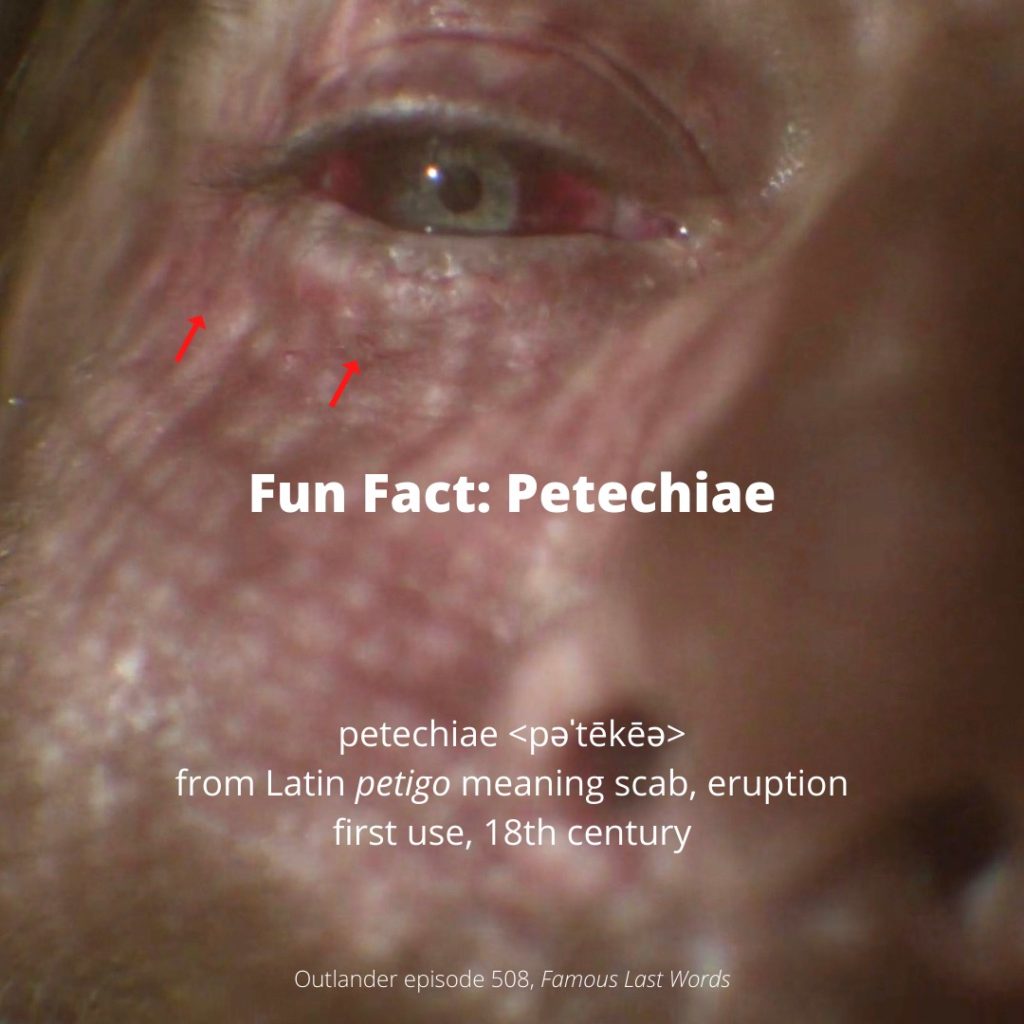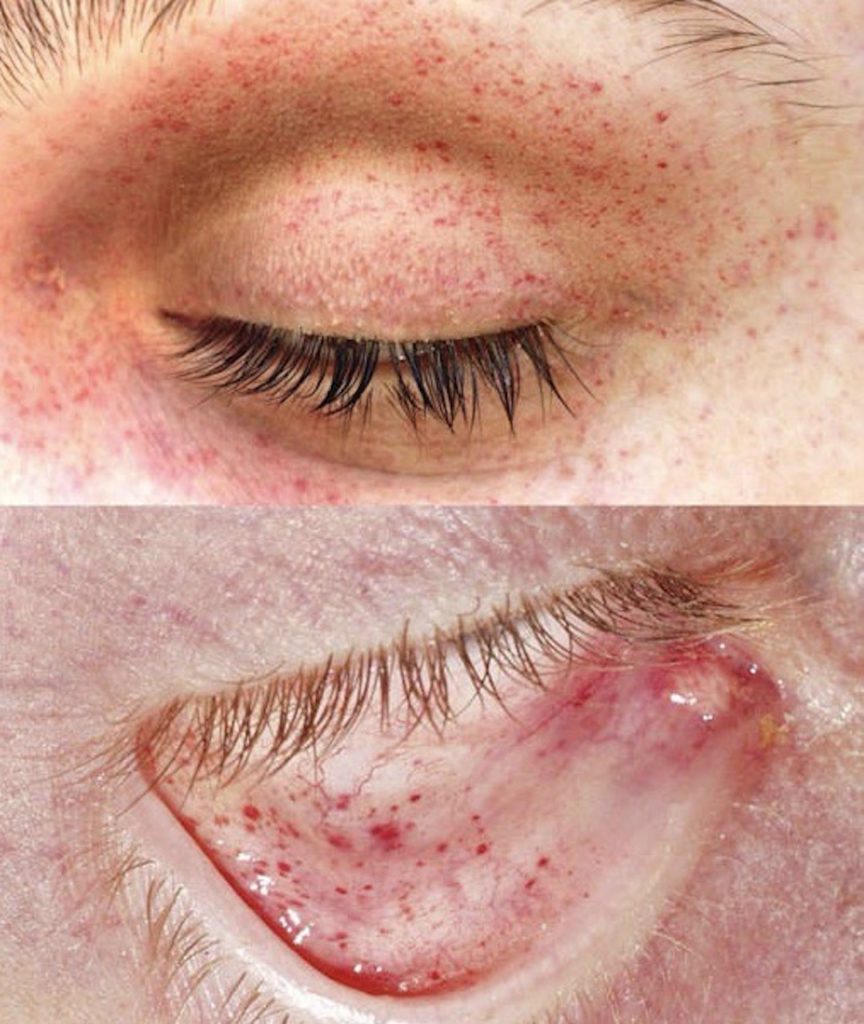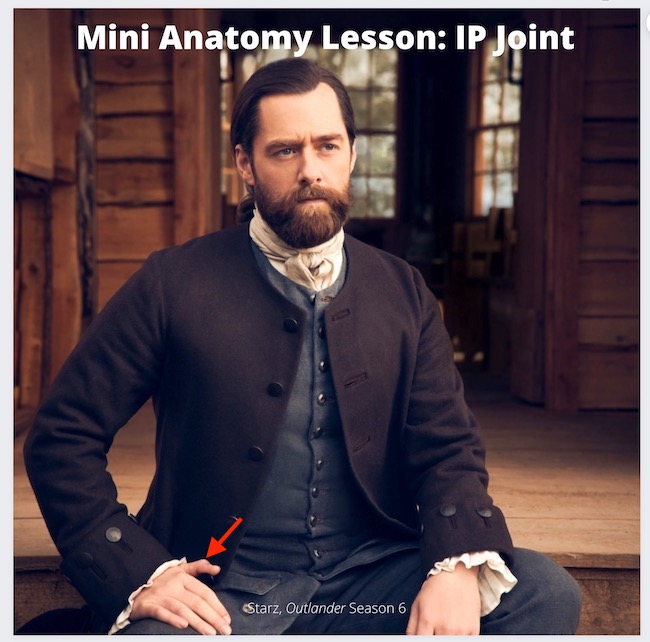
Outlander Def: Wait! What??? Roger Mac has a joint? But, but….he is a Presbyterian minister (almost)!
No worries. NOT that kind of joint! 😉
Anatomy Def: IP joints are between bones of each digit.
Let’s take a wee keek at hand anatomy to ken Roger’s bones and joints. The next figure shows bones of the (left) hand.
Collectively, the digits have 14 bones. Every finger contains three tiny bones, each known as a phalange. The proximal (near) phalange is green, the middle plalange is blue, and the distal (far) phalange is pink.
But, alas, Mr. Thumb only enjoys two phalanges: proximal (green) and distal (pink).
To identify the digits, anatomists number them from one to five:
-
- Thumb = digit #1
- Index = digit #2
- Middle = digit #3
- Ring = digit #4
- Little = digit #5
But, wait for it….drum roll…. 🥁 Anatomists number fingers, from one to four:
-
- Index = finger #1
- Middle = finger #2
- Ring = finger #3
- Little = finger #4
Horror of all horrors…. This means that finger #1 is also digit#2! 😱
You possible can see how this numbering system could get physicians into trouble. Adding fuel to the fire, anatomists in some countries regard the thumb as a finger and thus describe five digits and five fingers. Bottom line, US hand surgeons often prefer using terms (not numbers): thumb, and index, middle, ring, and little fingers to avoid confusion and mistakes! 🙄
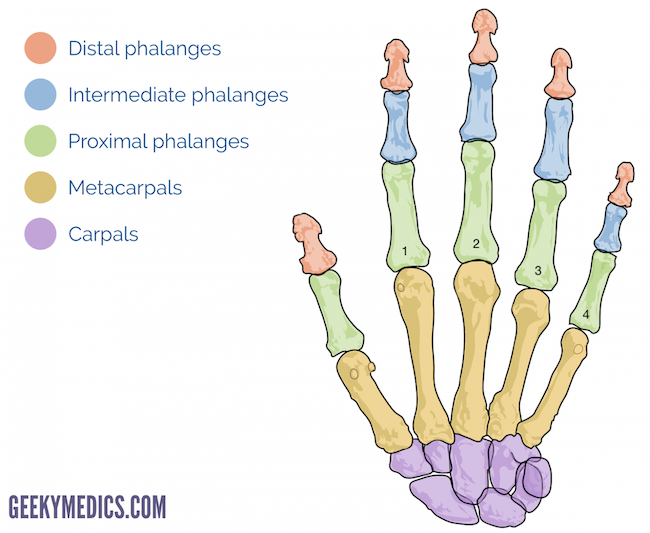
Moving on!
In anatomy, a joint is the site where two or more bones meet and allow for movement – the greater the number of joints, the greater possible movements. Thus, the many joints between phalanges of our five digits permit greater flexibility allowing digits to flex (bend) or extend (straighten). Thumb also can oppose (touch) each finger, individually, and little finger also can oppose the thumb. These movements are possible because forearm and hand contain numerous muscles that move the bones.
Joints between phalanges are named interphalangeal meaning “between phalanges.” Because each finger has two interphalangeal joints, these are further defined (see next figure of right hand – ignore metacarpophalangeal joints):
-
- PIP (proximal interphalangeal) joint occurs between each proximal and middle phalange.
- DIP (distal interphalangeal) joint occurs between each middle and distal phalange.
Puir wee thumb only has one joint between proximal and distal phalanges, so it has just a single IP (interphalangeal) joint. But, no tears for Mr. Thumb – he is verra special!
Whew! 😅 Took a bit to explain that!
Now, back to Roger’s anatomy! 😜 (I thought you would be up for that!)
Ergo, manly Roger is flexing the IP joint of his right thumb! 👏🏻👏🏻👏🏻 And, since in most people, the left hand is our shield hand while the right is our sword hand, it is just possible that Mr. Minister is contemplating a stramash!
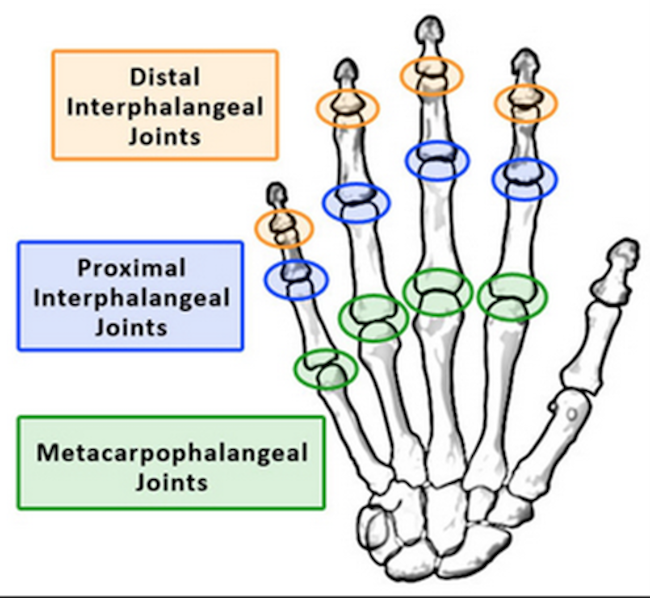
Try This: Flex (bend) one of your thumbs. Note it has one joint between its phalanges, the IP joint. Now flex any finger. Note it has two joints, the PIP joint nearest the palm and the DIP joint nearest the fingernail. Well done, student!
The hand and its fingers are elegantly engineered and staggeringly complex. If you wish to read more about them, I have written two long anatomy lessons of the hand.
Learn about IP, DIP, and PIP joints in Anatomy Lesson #22, “Jamie’s Hand, Symbol of Sacrifice and Anatomy Lesson #23, “Harming Hands, Helping Hands, Healing Hands.”
Read about finger and thumb joints in Diana’s first book, Outlander. The following excerpt is from Jamie and Claire’s lovely outing in the countryside, shortly after the wedding :
“Above one dark speckled pool, Jamie showed me how to tickle trout.
… “All it is,” he said, “is to pick a good spot, and then wait.” He dipped one hand below the surface, smoothly, no splashing, and let it lie on the sandy bottom, just outside the line of shadow made by the rocky overhang. The long fingers curled delicately toward the palm, distorted by the water so that they seemed to wave gently to and fro in unison, like the leaves of a water plant, though I saw from the still muscling of his forearm that he was not moving his hand at all.
… “There he is.” Jamie’s voice was low, hardly more than a breath; he had told me that trout have sensitive ears.
… One finger bent slowly, so slowly it was hard to see the movement. I could tell it moved only by its changing position, relative to the other fingers. Another finger, slowly bent. And after a long, long moment, another. I scarcely dared breathe, and my heart beat against the cold rock with a rhythm faster than the breathing of the fish. Sluggishly the fingers bent back, lying open, one by one, and the slow hypnotic wave began again, one finger, one finger, one finger more, the movement a smooth ripple like the edge of a fish’s fin.”
See Roger’s IP joint in Starz season six outlander promo photo!
The deeply grateful,
Outlander Anatomist
Follow me on:
-
- Twitter: @OutLandAnatomy
- Facebook: OutlandishAnatomyLessons
- Instagram: @outlanderanatomy
- Tumblr: @outlanderanatomy
- Youtube: Outlander Anatomy
Photo Credits: Starz, www. geekymedics.com, www.quizlet.com

